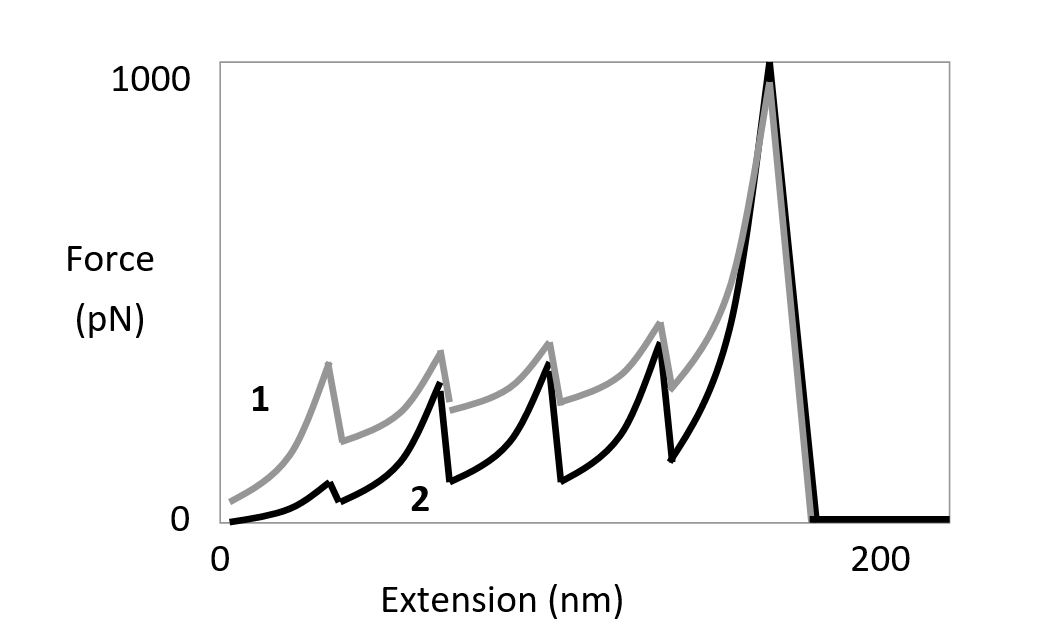Atomic force microscopy (AFM) is used in an experiment to unfold a multidomain protein by applying mechanical force. The protein contains several copies of an immunoglobulin domain that are unfolded one by one as the two ends of the molecule (one attached to a cover slip, and the other to the AFM tip) are being pulled apart, resulting in the "sawtooth" force-extension curves shown below. The same experiment is done twice, once in the presence and once in the absence of a chaperone protein that stabilizes the immunoglobulin domains. Answer the following questions based on this graph.

-According to the force-extension graph, how many immunoglobulin domains are unfolded in each of these experiments? Write down the number as your answer, e.g. 9.
Correct Answer:
Verified
View Answer
Unlock this answer now
Get Access to more Verified Answers free of charge
Q9: Two approaches have been devised to deal
Q10: Two segments (S1 and S2) in a
Q11: What is the advantage of using quantum
Q12: Given the absorption and emission spectra of
Q13: Which microscopy set-up uses a longer wavelength
Q15: A certain GTP-binding protein can exist in
Q16: Indicate true (T) and false (F) statements
Q17: The light used to excite a fluorescent
Q18: Indicate whether you would use a fluorescent
Q19: Imagine a transcription regulatory protein (X) that
Unlock this Answer For Free Now!
View this answer and more for free by performing one of the following actions

Scan the QR code to install the App and get 2 free unlocks

Unlock quizzes for free by uploading documents